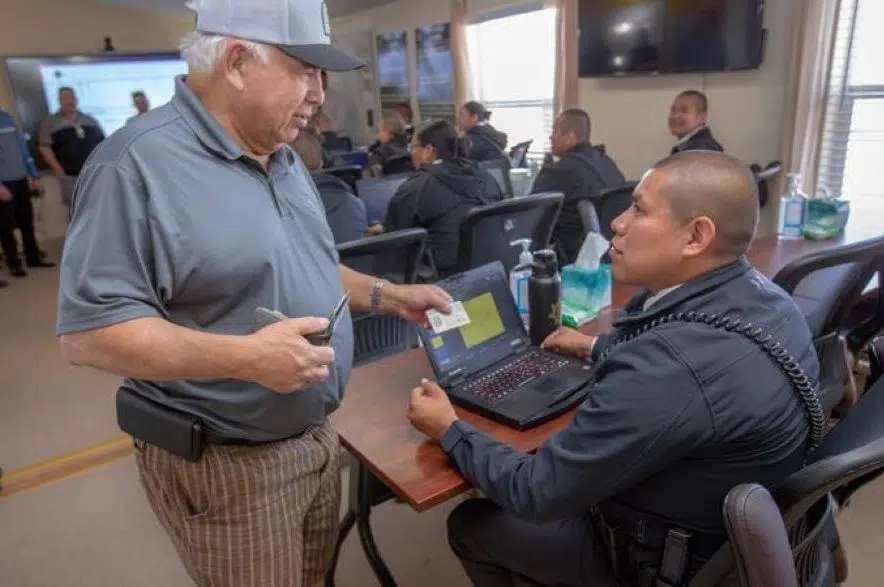Following major incidents in Saskatchewan, including the mass stabbings at James Smith Cree Nation, there has been heightened interest in the establishment of more tribal police services.
To gain more perspective and insight on the idea, representatives from the Prince Albert Grand Council (PAGC) recently ventured to Arizona to research the best practices in Indigenous policing from the biggest tribal police force in the United States.
PAGC representatives took in a two-day presentation by the Navajo Tribal Police in Chinle, Ariz., in which they learned about the Tribal Police’s policing model. They also got a tour of the Navajo Police Department, and its department of corrections, judicial district court, and training academy.
PAGC Vice Chief Joseph Tsannie said the biggest goal was to provide its member nations with ideas, examples from an established Indigenous police service like the Navajo Tribal Police.
“This visit was an important opportunity for us to learn from the Navajo Tribal Police, who have a wealth of knowledge and experience in Indigenous policing. We are excited to bring back the knowledge and insights we gain from this visit to share with our communities as we work to develop our own policing systems and uphold our Treaty and Inherent Rights,” Tsannie said in a statement.
The Navajo Nation is comprised of more than 400,000 members and situated on a 27,000-square-mile reservation. Navajo Police Chief Daryl Noon said he was proud to share their knowledge and experience with the PAGC.
“It was an honour to meet with the PAGC leaders and to reacquaint with our distant Dene relatives of whom we refer to as ‘the Other Entity’ in our Navajo language,” Noon said in the statement.
“Since the late 1800s we have established our own policing system, and we have experienced the unique challenges that come with it. We are proud to serve our community and help other Indigenous communities develop their own policing systems that aligns with their own cultural values and priorities.”
In October, the PAGC signed a contribution agreement with both the provincial and federal government at its annual assembly to explore new, community-oriented ways to deliver police services and improve safety in First Nations communities.











